A memory of two spaces that remain locked in the memory and mind
Altiplano
There are patterns in the heights and spaces within that are moved by wind. There are patterns of air currents, patterns of the winds that rifle into the face and patterns to the reckless jigsaw of the giant shapes of the Andes. Mountains and their rough silences taint the heart and mind forever with their multi-dimensional charisma. They have long subdued all else in my own spectrum of worry and thought. The silent force of the mountains is itself a kind of memory. Mountains conjure up images and sensations like few places, as though a wind-born thread somehow links all of the high places on the planet. It is as if the timeless elixir of wind, low-oxygen air, and stunning stillness re-jig the self into an ancient state of being.
Some of the heights offer up life in tiny pockets, others reveal just more opulent nothingness and barren torrents of air. A thousand places to wander that seem barely connected and an offering up of proof that nature’s enduring evolution that can slap the mind still.
The Andes stretch out and its curves sink and rise in the distance, which seems an unending distance. Moving north the spaces expand and contract into barely believable sightlines and width that are rounded by the winds and take in cultures and long forgotten slopes of sand and ash. Mighty volcanic ashen slopes slip from one colour tone to another as the sun shifts upon its surfaces in small degrees.
High atop the dry belly of the Andes and within the desiccated ‘Alta Catamarca’, sheets of shrieking wind knife across the salt lakes near the now inactive Mt. Pissis. Pissis which has ceased its creative volcanic activities remains the highest inactive volcano in the world at 6,793 metres, but now even it sits in understated respite, as though it simply needs to retreat into the great surrounding spirit of things. Here, in some of the planet’s driest holdouts, purple ashen sands – much of this left over from long ago eruptions – are lifted and sent overland to find new homes and other places in sparkling sprays. Salt lakes shimmer and disappear in quick winks as the winds play with the horizons. Salt basins look like snow stains, and salt lakes look entrapped.
What is left of shape and form here lies close to the ground in tight huddles and round humps. Shrubs vibrate rather than bend in the wind’s moods. Vicunas and four-legged animals have long disappeared at these altitudes, and all that remains of visible movement is the odd wisp of snow-fed water curling its cold push downwards. Triangles of snow rest on the peaks further west reminding that there is another world out there beyond this mass dimension of lines and tones.
For all of the desolate perfection the mind feels a great width of expression and a kind of panic that eventually one must leave this grand space of freedom. There are nothing rushed or panicky here; no searing cliffs, no perilous ice drops or gaping chasms; there is only the inevitable journey to get to, through, and way from the big deserts. Perfection here lies in the wandering and aimless shapes. Perfection here lies in the blistering beauty of sun reflecting off of sand and ash. It is a place that begs a soundtrack of strings.
Some places assault senses while some simply seep into them…seeping is what the Altiplano does as it is a place that takes time and intent to arrive.
Patagonia
White walled-in worlds where nothing moves – nothing but an invisible and constant wind. A locked in world where winds have been chiseling away on stone and ice…every edge and peak seem measured to fit.
Wind is apparently born of the sun hitting and warming earth and water and by extension the air resting above the two elements. As the air warms, it lightens making it rise, which opens a void into which cold air streaks, and that streaking wind of cold is wind. Patagonia’s essence is so much about its unrelenting polar winds and westerly blasts that I wonder if Patagonia could be without them. Intense periods of glaciation that began almost two million years ago covered, recorded, and preserved the explosive power and knife-edges of stone that shoot skyward.
Just as in the north there is a peaceful but forlorn vacuum left when cultures are absent from space, the spaces here in the lands of ‘patagon’ (large clumsy foot) are dominated by faultless lines of snow, stone, and ice. The mind here is forced inward, and then away…and then back again. Ledges drop, and the edges seem to have conformed themselves into sharp aerodynamic fins of the wind’s making.
Alexander Solzhenitsyn perhaps such spaces in mind when he wrote, “Some things lead into the realm beyond words.”
Moments of staring at the shelves of ice, and of the spires that break up the horizon, taken with heaves of cold air remind too of the power of ‘now’. That ‘now’ remains firmly in the memory.


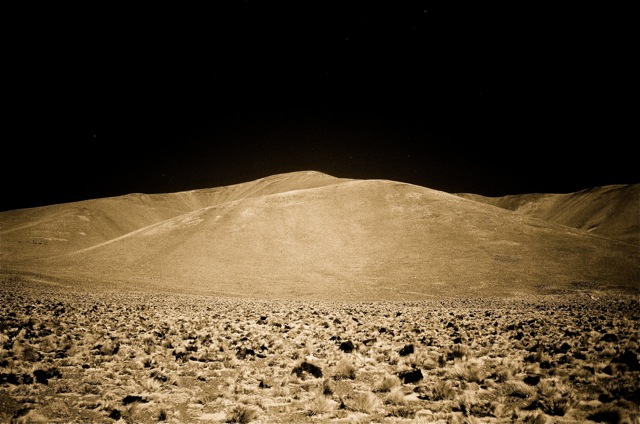




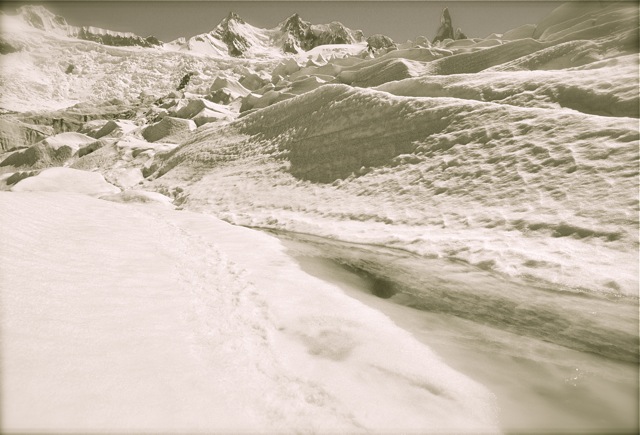
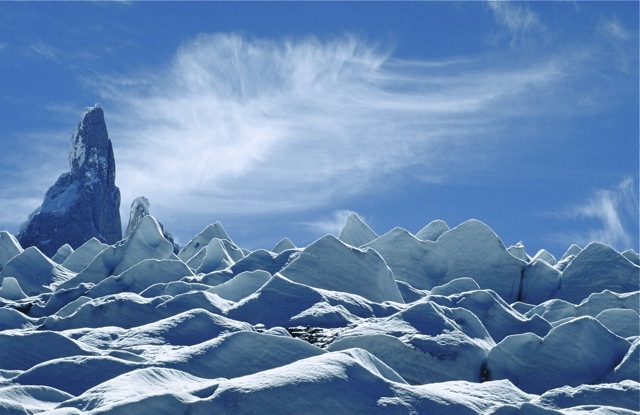
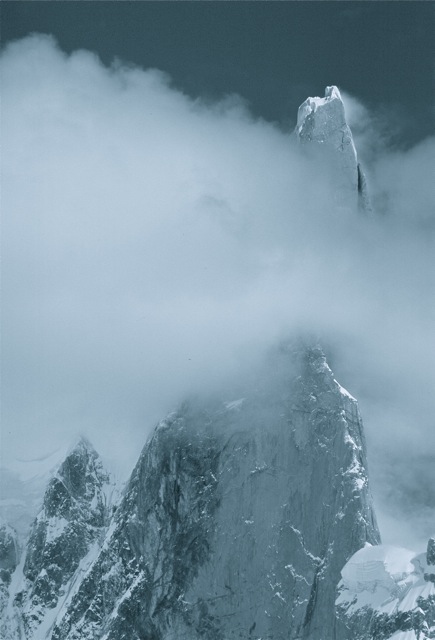
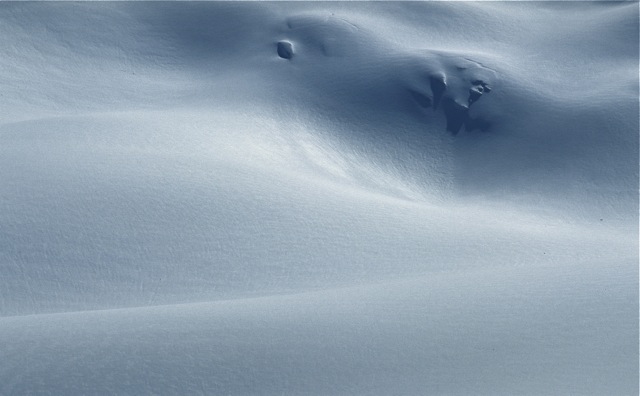
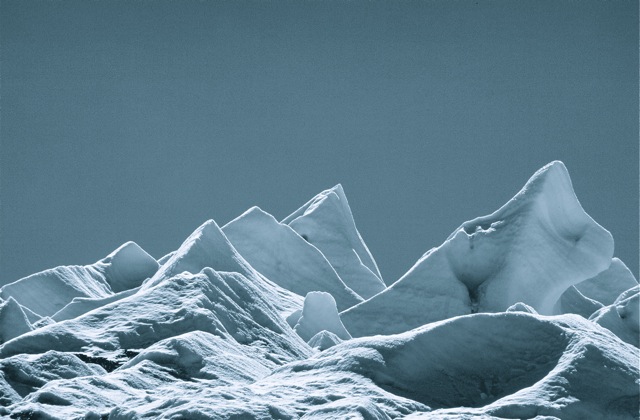
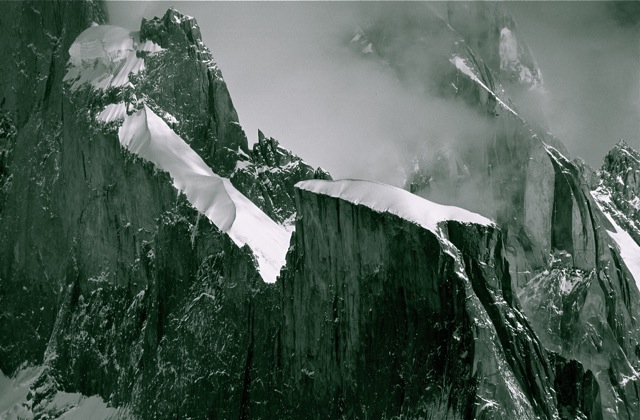
Thinking of the Mongoloid there. How nomadic humans can be…How humans in this world can be connected…just amazing…
There are so many links that people of the mountains have. Often I wonder how to bring them all together for a global version of ‘show and tell’ so that they themselves can witness these links.
be well Diana,
Jeff